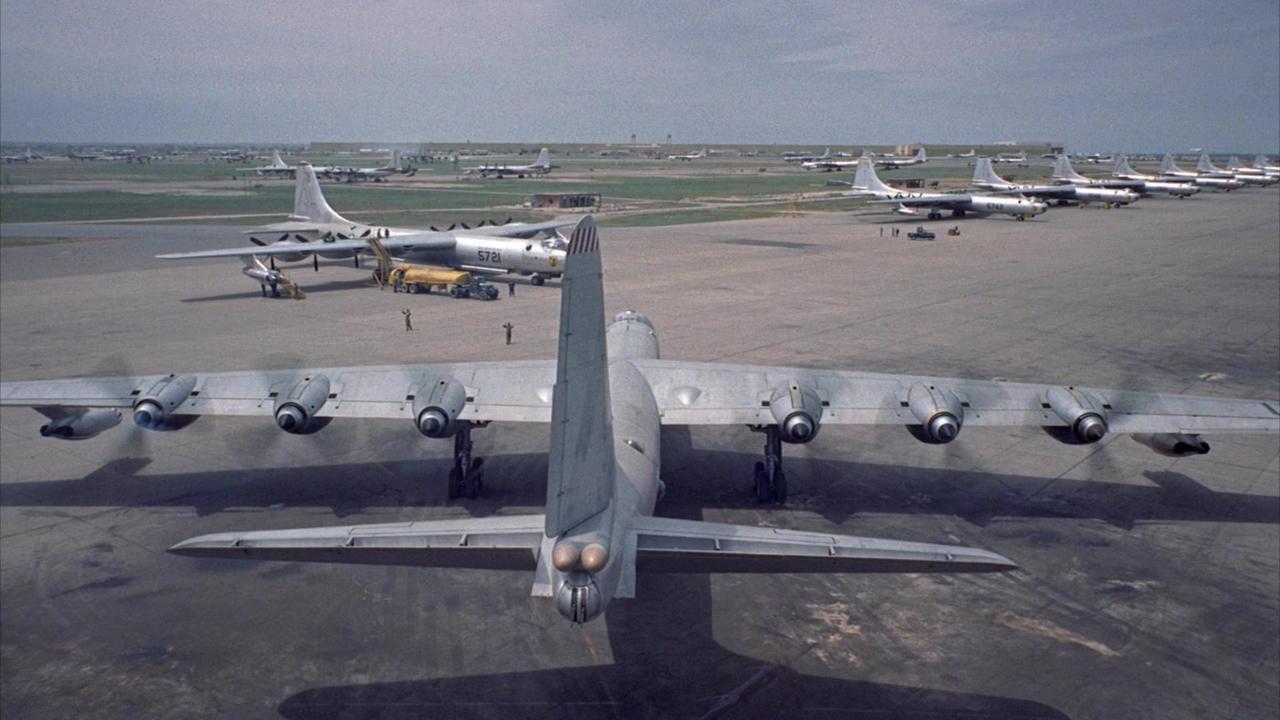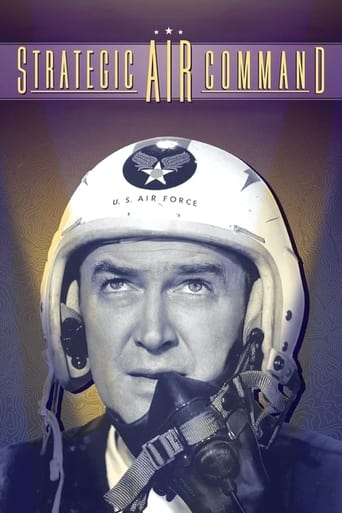

With a rentals gross of $6 million, the film ranks in 11th position as one of the most popular movies in the domestic market for 1955. Thanks to Stewart's popularity, the movie also did well at the British box-office , but in Australia it proved a dud. Booked as the Christmas attraction at Sydney's most prestigious Prince Edward, it was yanked after only three weeks of what was anticipated to be an eight or ten-week season. It was replaced by a stop-gap "Lucy Gallant" for three weeks before "To Catch a Thief" started its mightily successful run in early February.Stewart has a tailored part. He was himself a pilot during WW2 and his public also identified him with baseball, thanks to "The Stratton Story". Alas, despite flattering photography, the ageing star is obviously too old for the role. He doesn't engage our sympathy because no Air Force in its right senses would call on such an old crock to man its new super-planes. Stewart's magic just doesn't work here. He seems so out of place, we don't even expect him to break out into a Glenn Miller number. He looks plain miscast. When he's called upon to do more than just recite his lines, he mugs atrociously. Nearing the end of his long partnership with Anthony Mann, it seems that Stewart had simply tired of taking direction.The writing is superficial and dull. On the ground especially, the movie's a super dud, as boring in 2017 as it was when first released. Miss Allyson clogs up the works, Lovejoy fulminates about the patriotic necessity of SAC, Bennett is wasted in a tiny role. A couple of brief action sequences and some spectacular aerial shots of the planes in flight, are all that save a very dismal movie experience.
... View MoreDo you like a film with a good, solid plot? Well, then look elsewhere. This film is not about plot...at all. This film was designed to highlight the Strategic Air Command.There's a very loose story to hold the film together -- Jimmy Stewart plays a WWII era soldier who has become a baseball, only to be called back into the service to help get the SAC off the ground. His wife -- June Allyson -- has varying feelings about the call-back, but she is generally supportive of her husband. Eventually, an injury sidelines Stewart's character. That's about it.Lest you think there's nothing particularly impressive about this film, the flight sequences -- real flight sequences -- a stunningly photographed. In fact, that may be the best thing about the film! For a film with little plot, it has a very strong cast. Jimmy Stewart does a very nice job as a flier who is none to happy to be called back to service, but then gets wrapped up in the mission. June Allyson is bubbly June Allyson...type casting...although she has one dandy scene telling off a general! Frank Lovejoy is strong as the general; Lovejoy is little remembered, but was quite a good actor in his day. Barry Sullivan is along in a rather bland role. Jay C. Flippen and Harry Morgan -- too fine character actors -- are along and do nicely.Aside from the aerial photography, two things impressed me. First, you get a good look at the inside of some of the planes. Second, Stewart really was a military pilot, so it's interesting to see him in this role.Nevertheless, nothing makes up for a lack of plot, so I give this film a "6". If you have some special reason to watch a film on the topic, then you might enjoy it -- I did, my father was in the Strategic Air Command (albeit as a sergeant in the food service wing, but he was very proud of his service there).
... View MoreStrategic Air Command is directed by Anthony Mann and written by Valentine Davies and Beirne Lay. It stars James Stewart, June Allyson, Frank Lovejoy, Bruce Bennett and Barry Sullivan. Music is by Victor Young and cinematography by William H. Daniels.Film is inspired in part by the true story of baseball great Ted Williams, who after serving in World War II was drafted to serve in the Korean War just as his baseball career was taking off.There's sometimes a film you watch that you desperately want to be good because you can't imagine having to pan it. This becomes even more irksome when it's directed by and stars personal favourites. Sadly I find myself in that irksome frame of mind where Strategic Air Command is concerned, for in spite of the quality of Mann and Stewart, and some truly special "up in the air" sequences, picture is a bore.The flag waving and thematics involved are fine, these people deserve recognition, and it's great to have someone like Stewart, drawing from real life inspiration, leading out the story, but when on the ground the film comes off as an advertising reel for the Air Force that's punctured by military musings. None of which is very interesting.On the major side of plus points is the planes themselves, those B36/47 Bombers are a sight to behold, graceful yet menacing, and beautifully brought to life in Vista Vision and Technicolor. The "loyal wife of an airman" thread is neatly welded into the human story, with Allyson's chemistry with Stewart set in stone after their work together in The Stratton Story (1949) & TheGlen Miller Story (1954).Hardly a stinker, then, and Lay's story was Oscar Nominated, but it is a chore to get through, and one has to be suspicious of a film where the best thing about it is an aeroplane. 4/10
... View MoreI first saw this movie while I was in the Air Force in the SAC. This movie was like going to work. The movie itself, not a bad movie. It is watchable and the language and the demeanor of the characters is pretty realistic, like the guy being p@#$ off he had to give up his business career because he was re-activated! I was in SAC in the '80s and they stopped using the B-52 as their function in the '50s as a SAC bomber because the SAC missiles were less costly and were ICBMs. The B-36 can be found at some air museums if you are interested. To get a taste of this movie go to an Air Force base still flying B-52s, which I think reside in Barksdale AFB. SAC was hard a#$@% as the Air Force got and many were glad to leave and/or transfer to other non-SAC air bases!
... View More